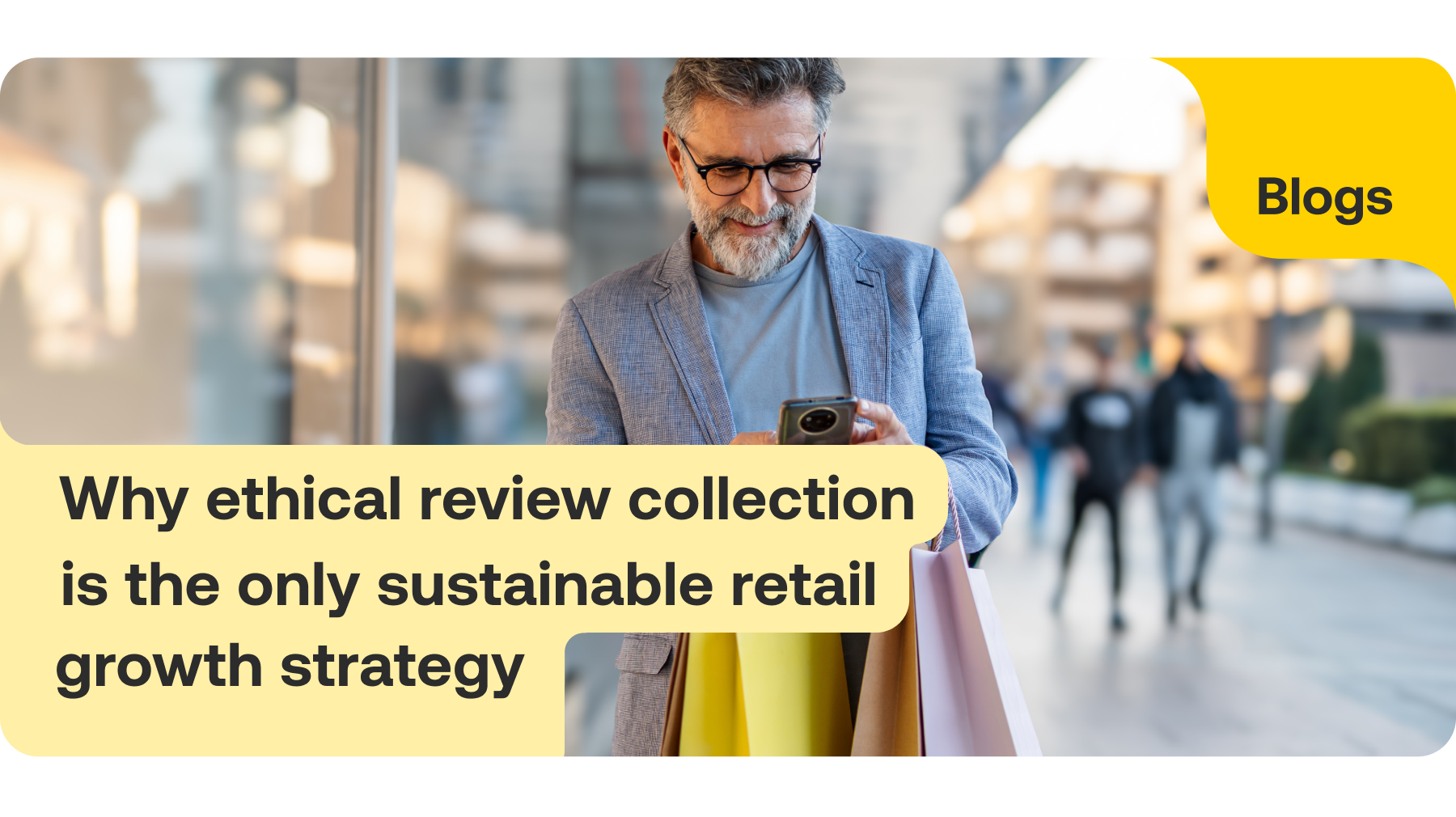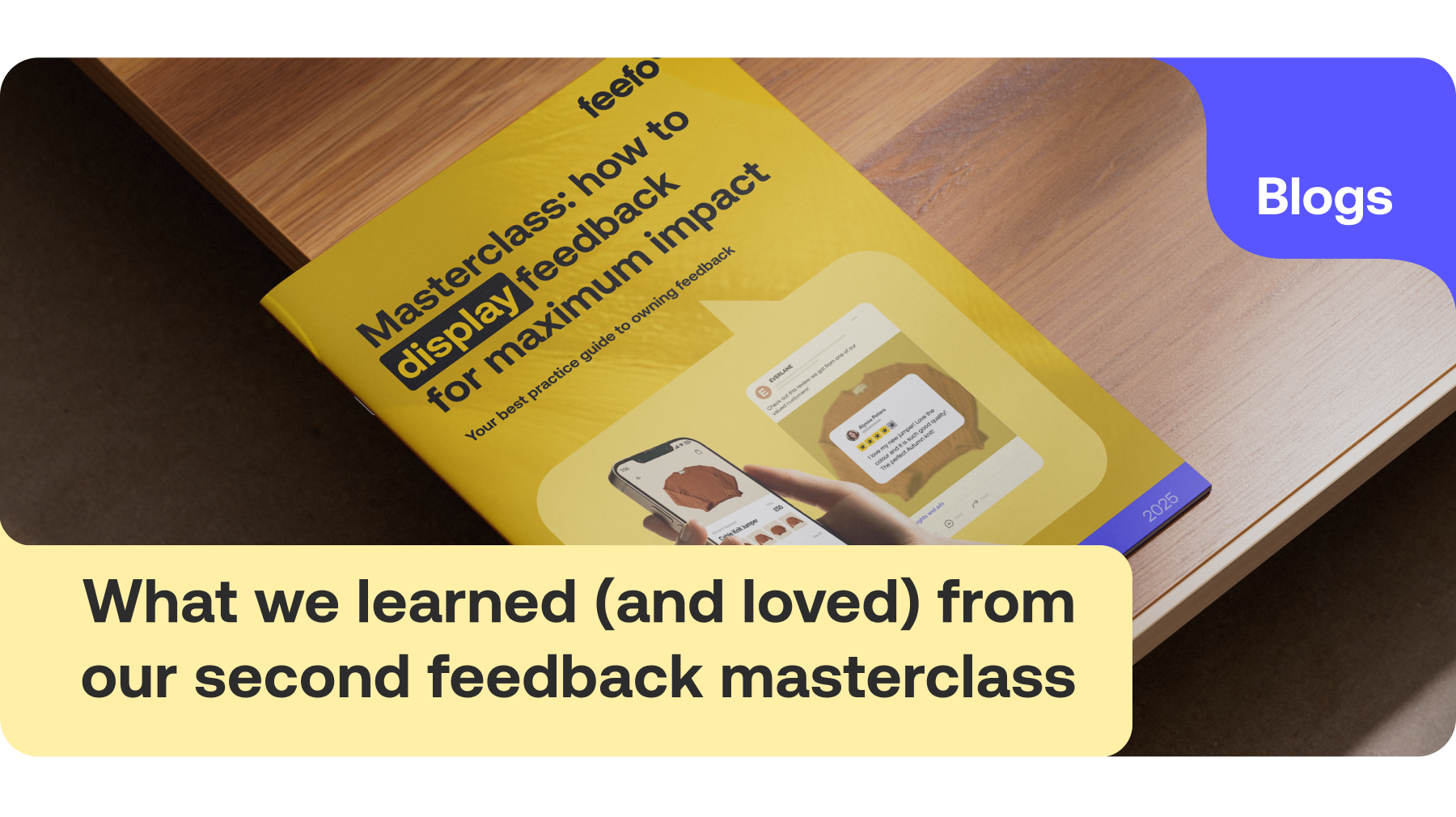You used to get reviews just by sending a follow-up email. Not anymore. Inboxes are flooded, customers are fatigued, and generic review requests blend into noise.
What worked 10 years ago no longer cuts it. To get reviews in a crowded space, you must be smarter with timing, channel choice, incentive use, and always respect your customer’s time.
This article is grounded in our Best Practice: How to Collect Feedback principles. It shows you how to update your approach so your review requests feel relevant, not intrusive.
What has changed? Why old methods fail
What's changed in the review landsape?
Over recent years, the customer review ecosystem has shifted dramatically. A few notable trends:
- Consumers increasingly turn to reviews as their primary decision tool. In many markets, reviews now outrank even friends’ recommendations in purchase influence.
- Regulation is tightening. In the UK, new rules have banned misleading review practices and penalising fake content.
- Review platforms themselves are under scrutiny. Many businesses are being required to maintain transparency in how reviews are solicited and moderated.
- Shoppers want authenticity and that includes balanced reviews. Perfect 5-star after 5-star can feel suspicious; real, honest voices carry weight.
- Automation and AI have entered the mix: from sentiment detection to auto-responses to search results, but the balance between scale and sincerity is key.
- We live in a world of crowded inboxes and constant review requests. Collecting feedback that actually helps your business is harder than ever.
- Feedback fatigue is real. Asking too often, or with irrelevant questions, erodes trust (and response rates).
Reviews are more than a campaign you can set and forget. You need to consider what and when to ask, add personalisation (but not too much), and navigate a new regulatory landscape, while continuing to market to your customers.
The power of collecting reviews
Every customer interaction matters. A smooth delivery, a helpful support chat, a product that exceeds expectations. But those positive moments fade fast if you don’t capture them. Collecting feedback turns fleeting satisfaction into lasting business value.
Here’s why reviews matter more than ever:
- Trust drives purchases. Many consumers read reviews before deciding.
- More reviews = higher conversion. A few extra reviews can tip a hesitant buyer over the threshold.
- Feedback fuels product and process improvement. Reviews give you direct insight into what customers love, and what they don’t.
- Loyal customers spend more. Brands that prioritise excellent experience often grow faster and retain more.
- Reputation is at stake. When regulatory bodies and platforms crack down on fake reviews, lacking a robust strategy becomes a liability.
If you want a broader take on how feedback fits into business strategy, check out our guide on Customer Feedback: How to Use It to Better Your Business.
How to get customer reviews noticed
Here’s a step-by-step playbook, rooted in our best practices, you can follow (or adapt) to turn happy customers into reviewers.
1. Start with purpose
Don’t just ask for reviews for the sake of it. Define clearly why you're collecting feedback—e.g. to reassure future buyers, identify friction, improve your service.
Every question should lead to insight.
2. Time your feedback requests with care
Avoid the “one day after” rule as a default. Our guide recommends timing based on the type of interaction:
- For service experiences, requests within ~15 hours often perform well.
- For product delivery, 1–4 days (or sometimes ~8 days in retail) can be optimal.
And if your customer journey has multiple touchpoints (e.g. onboarding, support, renewal), map feedback requests to those rather than clustering at one point.
3. Keep it short & relevant
Surveys that ask too much get abandoned. We recommend keeping feedback forms concise, ideally less than five questions.
Use only what you need, and reserve deeper follow-ups for highly engaged respondents.
4. Use multiple channels — meet people where they are
Email alone probably won’t suffice any more. We recommend trying an omni-channel approach with additional methods such as:
- In Mail embedded review (respond without leaving email)
- SMS
- In-app / push notifications
- QR codes (for physical settings)
- Custom surveys
This reduces reliance on a single channel and reaches customers in their preferred mediums.
5. Write subject lines that compel, not confuse
Your subject line is your one shot at getting noticed. Use personalisation (name, product), clarity, and relevance. Avoid vague or ‘gimmicky’ phrasing.
Our guide includes A/B test recommendations for subject lines.
6. Incentivise — but transparently and ethically
Incentives can work. And they are allowed on product reviews, but must be clearly disclosed and should reward participation, not positive sentiment.
You can offer a modest reward (discount code, loyalty bonus, small gift) but with these rules:
- Don’t require a positive review in return
- Be transparent about what the incentive is
- Avoid biasing the type or tone of feedback
Reward effort, not praise. This feedback must always be appropriately labelled as incentivised, or you will fall foul of the new DMCC Act designed to combat fake reviews. Read Feefo's guidance on labelling incentivised reviews.
7. Use the thank-you moment wisely
Don’t just say “Thanks.” Use the post-feedback moment to:
- Reinforce what the feedback will be used for
- Invite sharing / referrals
- Set expectations on next steps
Thank you pages are often overlooked, but play an important part in the feedback journey. They act both as an end to the feedback process and a launchpad for another customer experience.
Bonus: Always ensure compliance & accessibility
- Include opt-outs in every feedback request
- Be transparent about data use
- Make the feedback form mobile-friendly and accessible
- Operate within GDPR / data regulation frameworks
Our blog, How to Get Your Customers to Share Their Feedback, offers ideas for creating a good value exchange, and shows what motivates customers to leave feedback.
Success Story: Not On The High Street’s review boost
One standout example is Not On The High Street (NOTHS); a UK marketplace for unique gifts.
They partnered with Feefo to use our new In Mail feature, which allows customers to leave a review directly inside the email, no redirection required.
Here’s how it went:
- In a three-week pilot, NOTHS saw an 88% uplift in response rates (from 1.7% to 3.2%) using In Mail.
- The form completion rate rose to 92%, showing customers found it intuitive and frictionless.
- They also tested a shorter subject line, which delivered a 25% boost in open rates.
According to Lorin Minxhozi, Lead Product Manager at NOTHS: “We were so excited to remove the friction of leaving a review … it did not disappoint!”
This shows how removing small hurdles like, letting people respond right from their inbox, can drive significant lifts in engagement.
To see more stories like this, visit our Customer Stories page.
Which metrics should you be watching?
To know whether your review strategy is working, keep an eye on:
- Review volume (per week / month)
- Review rate (% of customers asked who respond)
- Average rating / sentiment
- Response rate (you replying to reviews)
- Time to first response
- Conversion uplift & revenue impact
Do run experiments — e.g. asking at 3 days vs 7 days, subject line variations, or link vs button — since small tweaks often yield big gains. Separating product and service reviews can also be a good way to increase volume and quality of responses.
Encourage customers to leave reviews with Feefo Feedback Request Manager
According to our Consumers Trends Report, shoppers don’t always trust what they see online – 72% of them worry about fake feedback. Invite-only reviews, which are guaranteed to come from your genuine customers, are a great way to support prospects as they decide whether to buy from you.
With our Feedback Request Manager, you can step into the shoes of your customers and schedule review requests that align with their convenience. The invite-only approach guarantees heightened engagement and will instil a stronger trust in your brand.



